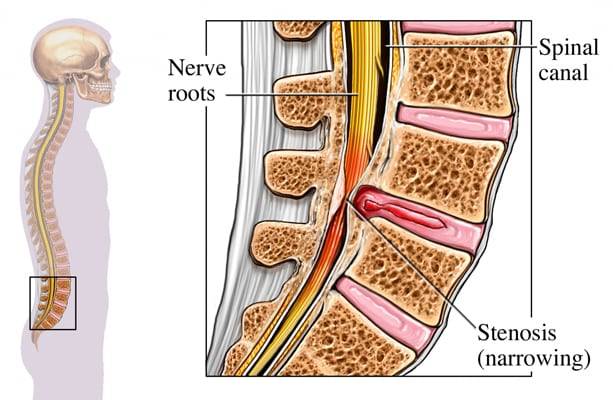Spinal Stenosis
Spinal Stenosis Treatment Murray UT
WHAT IS SPINAL STENOSIS?
Spinal Stenosis is a Narrowing of the Spinal Canal.
There are multiple canals, or openings that the nerves in your neck and back travel through. The Central Canal is where your spinal cord and spinal nerves run. This canal can narrow and become choked as we age and as our spine degenerates. This is called Spinal Stenosis. This narrowing can pinch/compress the Spinal Cord and Spinal Nerves that travel through it. This is one of the more common causes of disability and loss of independence as we age.
Common symptoms of stenosis:
- Radiating numbness
- Pain in lumbar spine or cervical spine
- Difficulty walking
- Temporary relief when you sit or lean forward
The spinal cord and spinal nerves are very delicate structures. Long-standing pinching or compression on either of those nerve structures can result in permanent nerve damage if left untreated.
WHAT CAUSES SPINAL STENOSIS?
Spinal Stenosis is most commonly a combination of disc injury, subsequent degeneration and arthritis buildup. This condition will progress with time causing more and more narrowing and nerve compression. Your intervertebral discs are like a strong jelly donut; it has a tough outer fibers that keep the soft jelly like fluid inside contained. Your disc can get injured or degenerate (become thin and worn out), when you tear those fibers resulting in a bulge, herniation or rupture. The majority of the time someone who has one of these disc injuries will have narrowing of the spinal canal, subsequent Stenosis.
The secondary issue causing Stenosis is the facet joints. The bones that make up the Facet Joints can grow or become larger due to stress or degeneration, wear and tear (arthritis), and can contribute to the overall narrowing.

CAN STENOSIS BE TREATED??
Very Effective Non-Surgical Treatment for Spinal Stenosis
In most cases Stenosis can be treated and improved. It historically requires a significant surgery, but thankfully there are other options available. Spinal Stenosis requires an MRI to formally diagnosis. Whether or not you are a good candidate for Dr. Clarks program is entirely contingent on what your MRI shows, and what structures are at the root of the Stenosis.
If he can’t help you, he will tell you upfront and direct you to the best health care practitioner for your situation.
He has successfully treated thousands of Spinal Stenosis Patients and can identify with consistency if you are a good candidate.
